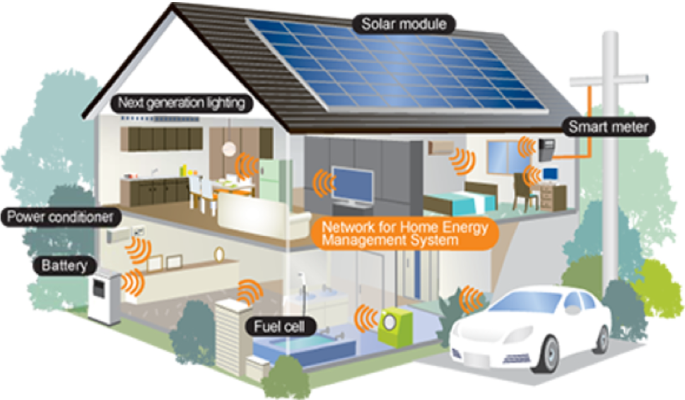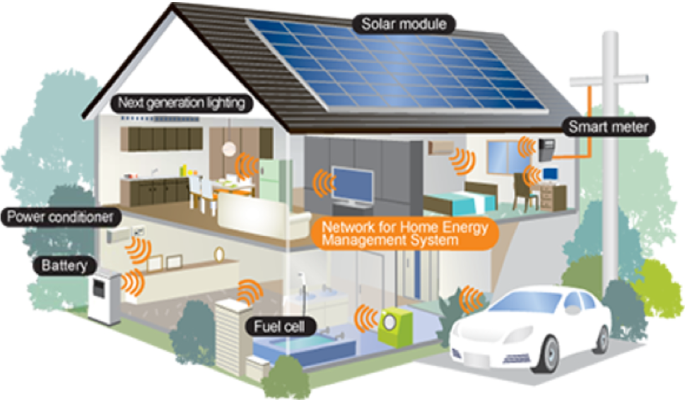Smart Home Energy Management: Revolutionizing Energy Efficiency and Cost Savings
In the age of rising energy costs and increasing environmental concerns, managing home energy usage efficiently has never been more important. Enter smart home energy management – a revolutionary approach to controlling and optimizing energy consumption in your home using advanced technology and intelligent devices. With smart energy solutions, homeowners can monitor usage, reduce waste, and save money, all while contributing to a greener, more sustainable future.
This article will guide you through the concept of smart home energy management, its benefits, the various devices involved, and how you can integrate them into your home to maximize energy efficiency.
What Is Smart Home Energy Management?
Smart home energy management refers to the use of technology and connected devices to monitor, control, and optimize energy consumption in your home. These systems allow homeowners to track energy use, adjust settings based on real-time data, and automate processes to ensure energy is being used as efficiently as possible.
By using a smart home energy management system, you can reduce your carbon footprint, lower utility bills, and make your home more comfortable through smarter energy use. These systems often rely on connected devices like smart thermostats, lighting, appliances, and energy monitors that work together to manage energy in real-time.
How Smart Home Energy Management Works
At the core of smart home energy management is the integration of various smart devices, sensors, and controllers that communicate with each other. Here’s how it works:
1. Smart Thermostats
A smart thermostat is one of the most popular devices in any smart home energy management system. It adjusts the temperature of your home based on your preferences, routines, and even the weather. It can also learn your habits and optimize heating and cooling cycles to prevent wasted energy.
For example, instead of running the AC all day, your smart thermostat can turn off the system when you’re not home and adjust the temperature just before you return, saving energy without sacrificing comfort.
Popular Smart Thermostats:
- Nest Learning Thermostat: Learns your schedule and adjusts temperature settings automatically.
- Ecobee SmartThermostat: Offers remote sensors and integrates with various smart home devices.
2. Smart Lighting Systems
Smart lighting is another key component of smart home energy management. LED bulbs, when paired with smart controls, offer significant energy savings compared to traditional lighting. With smart bulbs and switches, you can remotely control your lights, set timers, and automate them to turn off when not needed.
You can also adjust the brightness based on the time of day, or program lights to mimic your presence at home, further enhancing security and reducing energy use.
Key Benefits of Smart Lighting:
- Automatic Scheduling: Turn lights on or off based on your schedule.
- Remote Control: Manage lighting from anywhere using your smartphone or voice assistants.
- Energy-Efficient Bulbs: LED smart bulbs consume up to 80% less energy than traditional incandescent bulbs.
3. Energy Monitoring Systems
Smart energy monitors track your home’s electricity consumption in real-time, providing detailed insights into how much energy different devices or appliances are using. By monitoring energy usage, you can identify areas where you can cut down on waste and improve efficiency.
Some advanced energy monitors can even give you real-time alerts when energy consumption spikes, helping you stay on top of usage.
4. Smart Appliances
Smart appliances, such as refrigerators, washing machines, and dishwashers, are designed to consume energy more efficiently. These appliances can be controlled remotely, monitored for energy consumption, and programmed to operate during off-peak hours to take advantage of lower energy rates.
Example Smart Appliances:
- Samsung Smart Refrigerator: Monitors energy use and can be controlled remotely.
- LG Smart Washer/Dryer: Automatically adjusts water temperature and washing cycles based on load size to minimize energy consumption.
5. Smart Plugs and Outlets
By using smart plugs and outlets, you can easily turn off appliances that are consuming power in standby mode, also known as “vampire energy.” This is especially useful for devices like televisions, chargers, and kitchen appliances that tend to consume energy even when not in use.
With a smart plug, you can turn off devices remotely, set schedules, or automate them to shut off after a certain period.
The Benefits of Smart Home Energy Management
1. Reduced Energy Consumption and Lower Utility Bills
One of the most significant benefits of smart home energy management is its potential to reduce energy consumption. By optimizing the use of heating, cooling, lighting, and appliances, you can significantly cut down on wasted energy. The result? Lower utility bills and savings over time.
2. Environmental Impact
By using less energy, you’re not only saving money but also reducing your carbon footprint. Smart energy management contributes to sustainability by promoting more efficient use of resources. When combined with renewable energy sources like solar panels, it can help reduce overall environmental impact.
3. Convenience and Control
A smart home energy management system puts control at your fingertips. You can monitor your energy usage from anywhere and make real-time adjustments. The convenience of remote control, automatic scheduling, and the ability to integrate multiple smart devices into one ecosystem make managing your home energy more effortless than ever.
4. Increased Home Value
Homes with energy-efficient technologies are more appealing to buyers, especially those looking for smart home features. A smart home energy management system can increase the resale value of your property by making it more energy-efficient, comfortable, and technologically advanced.
5. Enhanced Security and Automation
With smart sensors, thermostats, and lighting systems, you can also improve your home security. Smart systems can alert you to energy spikes, unusual activity, or even provide reminders to turn off appliances when you’re not around. Additionally, automation features ensure your home operates efficiently without constant manual intervention.
How to Set Up a Smart Home Energy Management System
Getting started with smart home energy management is easier than ever. Here’s a step-by-step guide:
Step 1: Assess Your Energy Needs
Start by evaluating your current energy consumption patterns. Identify high-energy-use areas in your home, such as heating, cooling, and lighting. This will help you prioritize which devices to incorporate into your energy management system.
Step 2: Choose the Right Devices
Select smart devices that best fit your needs:
– Smart thermostat for efficient temperature control.
– Smart lighting system for energy-efficient lighting.
– Energy monitor to track energy usage in real time.
– Smart plugs to control standby energy consumption.
Step 3: Install and Integrate Your Devices
Install your devices and connect them to your home Wi-Fi network. Most smart home energy devices come with easy-to-follow instructions and mobile apps for seamless setup and control.
Step 4: Set Schedules and Automations
Use your smart home apps to set schedules for your appliances, lights, and thermostat. Automate your energy usage based on your daily routines, so everything runs efficiently without needing manual adjustments.
Step 5: Monitor and Optimize
Keep track of your energy consumption through your smart energy monitor and app. Continuously adjust your settings to optimize usage and achieve your energy-saving goals.
FAQs about Smart Home Energy Management
Q1: Can smart home energy management save me money?
A1: Yes! By optimizing your energy consumption and reducing waste, you can lower your utility bills. Many smart devices also allow you to take advantage of off-peak energy rates, further reducing costs.
Q2: Are smart energy devices easy to install?
A2: Most smart energy devices are designed for easy installation, and many come with mobile apps that guide you through the setup process. Some may require professional installation, but the majority are DIY-friendly.
Q3: Do smart thermostats really save energy?
A3: Yes, smart thermostats are designed to learn your habits and adjust temperature settings automatically. They optimize heating and cooling schedules, ensuring your home stays comfortable without wasting energy.
Q4: Can I control my smart energy devices remotely?
A4: Yes! You can control most smart energy devices remotely via mobile apps, voice commands, or home automation systems like Amazon Alexa, Google Assistant, or Apple HomeKit.
Conclusion
Incorporating smart home energy management into your daily routine not only helps you save money and reduce your carbon footprint but also makes your home more efficient, comfortable, and secure. By integrating smart thermostats, lighting systems, energy monitors, and smart appliances, you can take full control of your energy consumption and create a home that works for you.
So, whether you’re looking to cut down on your energy bills, contribute to a greener environment, or simply make your home more convenient and comfortable, smart home energy management offers a powerful solution to meet your needs.
For more insights into smart home technologies, visit Springer Nature and explore the latest innovations in smart home energy management.


